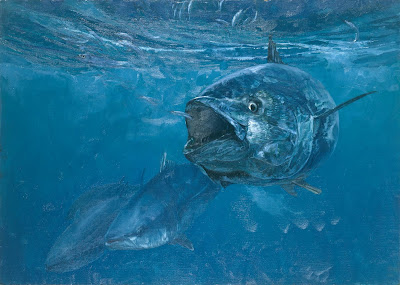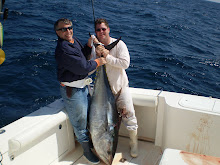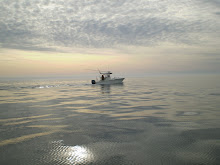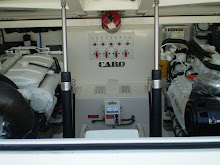
By Jim Field
On Saturday, September 25, a group of fishing buddies chartered the Salt Weapon out of Pirate's Cove Marina in Manteo, NC to fish the waters Northeast of Oregon Inlet. Their targeted catch (and release): white marlin. I was signed up to go, but on the preceding Thursday was informed that I had to cover a hospital board retreat for a sick work colleague--here's the rub, the hospital being in Northern California and the retreat being held on that Saturday. Upon learning I would miss the trip, I freely admit going into a mental tailspin--heck, I had only waited months to do this. In fact, the whole idea of our group of boat owners/seasoned fishermen taking this trip was to observe what the pros do and learn from them, so as to ratchet up our own techniques. At a minimum, we'd find out by first hand observation that we're brilliant and have the benchmarking to prove it. But it wasn't to be--at least for me.
However, Dan and Wawa Bob--as in Bob Ficoturo, Captain of Freespool out of Indian River, DE--and the rest of the group apparently has a great trip, successful in the pursuit of white marlin and useful tips on fishing/boat handling techniques. The weather wasn't calm and increased across the day, and while it didn't present a challenge for Salt Weapon, it nevertheless impacted their ride, even in this size of boat.
Bob, it must be noted, generously covered my portion of the charter fee. Including tip, this would have to come to around $400, I presume. While recognizing his goodwill, I intend to compensate Bob for my full share when I see him next. (Good fishermen don't make upstanding guys pay for their calendar misfortunes.) But thanks anyway, Bob. Truly appreciated.
Pictures and details below.
A Salt Weapon
CAPT. DENNIS ENDEE has over 20 years of offshore fishing experience, fishing NC waters the past 15 years and winter fishing in Mexico. He takes you where the Big Fish are! A SALT WEAPON is a 54’ PAUL MANN Custom Carolina Sportsfisher AS FEATURED ON ESPN AND OLN (now versus). Total remodel in 2007. Boat equipped for comfort cruising at 30 knots and a true all weather fishing machine!
Dan with the stick (perhaps dealing with equipment malfunction?)

Beautiful shot of "fish on"

All but the tail out of the water. A majestic animal--truly


















